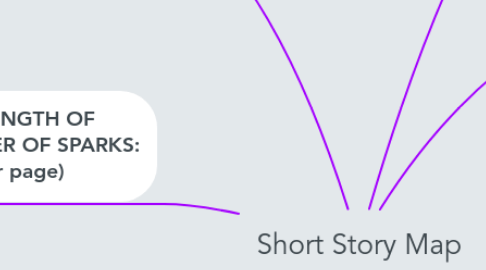
1. Setting:
2. Theme:
2.1. Judgment - Possibly one of the most common themes is judgment. In these books, a character is judged for being different or doing wrong, whether that be real or just perceived as a wrongdoing by others. Among classic novels, we can see this in "The Scarlett Letter," "The Hunchback of Notre Dame," and "To Kill a Mockingbird." As these tales prove, the judgment does not always equal justice, either.
2.2. Survival - There is something captivating about a good survival story, one in which the main characters must overcome countless odds just to live another day. Almost any book by Jack London falls into this category because his characters often battle nature. "Lord of the Flies" is another in which life and death are important parts of the story. Michael Crichton's "Congo" and "Jurassic Park" certainly follow this theme.
2.3. Peace and War - The contradiction between peace and war is a popular topic for authors. Quite often, the characters are gripped in the turmoil of conflict while hoping for days of peace to come or reminiscing about the good life before the war. Books such as "Gone With the Wind" show the before, during, and after of war, while others focus on the time of war itself. Just a few examples include "All Quiet on the Western Front," "The Boy in the Striped Pajamas," and "For Whom the Bell Tolls."
2.4. Love - The universal truth of love is a very common theme in literature and you will find countless examples of it. They go beyond those sultry romance novels, too. Sometimes, it is even intertwined with other themes. Think of books like Jane Austen's "Pride and Prejudice" or Emily Bronte's "Wuthering Heights." For a modern example, just look at Stephenie Meyer's "Twilight" series.
2.5. Heroism - Whether it is false heroism or true heroic acts, you will often find conflicting values in books with this theme. We see it quite often in classical literature from the Greeks, with Homer's "The Odyssey" serving as a perfect example. Then again, you can also find it in more recently written stories such as "The Three Musketeers" and "The Hobbit."
2.6. Good and Evil - The coexistence of good and evil is another popular theme. It is often found alongside many of these other themes such as war, judgment, and even love. Books such as the "Harry Potter" and "Lord of the Rings" series use this as the central theme. Another classic example is "The Lion, The Witch, and The Wardrobe."
2.7. Circle of Life - The notion that life begins with birth and ends with death is nothing new to authors and many incorporate this into the themes of their books. Some may explore immortality such as in "The Picture of Dorian Gray." Others, like Tolstoy's "The Death of Ivan Ilych," shock a character into realizing that death inevitable. In a story like F. Scott Fitzgerald's "The Curious Case of Benjamin Button," the circle of life theme is turned completely upside down.
2.8. Suffering - There is physical suffering and internal suffering and both are popular themes, often intertwined with others. A book such as Fyodor Dostoevsky's "Crime and Punishment" is filled with suffering as well as guilt. One like Charles Dickens' "Oliver Twist" looks more at the physical suffering of impoverished children, though there is plenty of both.
2.9. Deception - This theme can also take on many faces as well. Deception can be physical or social and it's all about keeping secrets from others. For instance, we see many lies in "The Adventures of Huckleberry Finn" and many of Shakespeare's plays are centered on deception at some level. Any mystery novel has some sort of deception as well.
2.10. Coming of Age - Growing up is not easy, which is why so many books rely on a "coming of age" theme. This is one in which children or young adults mature through various events and learn valuable life lessons in the process. Books such as "The Outsiders" and "The Catcher in the Rye" use this theme very well.
3. Working Point of View:
3.1. First Person (I, we)
3.1.1. Unreliable voice
3.1.2. Stream-of-consciousness voice
3.2. Second Person (you)
3.3. Third Person (he, she, it, or they, never I or we, or you)
3.3.1. Third-person limited (when the narrator conveys the thoughts, feelings, opinions, etc. of one character)
3.3.2. Third-person objective (narrator who tells a story without describing any character's thoughts, opinions, or feelings; instead, it gives an objective, unbiased point of view)
3.3.3. Third-person omniscient (the narrator reveals information that the characters do not have)
3.3.4. Third-person free/indirect (a method of presenting a character's voice freely and spontaneously in the middle of an otherwise third-person non-personal narrator)
3.3.5. Third-person alternating (alternate between the third person limited and third person omniscient)
3.4. Alternating Person
3.5. Epistoray Voice
4. ESTIMATED LENGTH OF BOOK/NUMBER OF SPARKS: (250 words per page)
4.1. up to 75,000 words = +300 pages (3 sparks)
4.2. 90,000 words = 360 pages (4 sparks)
4.3. 100,000 words = 400 pages (4+ sparks)
5. Plot:
5.1. Start:
5.1.1. Indroduction:
5.1.1.1. Stasis:
5.1.2. Rising Action:
5.1.2.1. Trigger:
5.1.2.2. Quest:
5.2. Middle:
5.2.1. Climax:
5.2.1.1. Surprise:
5.2.1.2. Critical Choice:
5.2.1.3. Climax:
5.3. End:
5.3.1. Falling Action:
5.3.1.1. Reversal:
5.3.2. End:
5.3.2.1. Resolution:
6. Character:
6.1. Name:
6.1.1. age:
6.1.2. eye color:
6.1.3. hairsytle:
6.1.4. hair color:
6.1.5. skin color:
6.1.6. Height/Weight:
6.1.7. birthplace:
6.1.8. birthdate:
6.1.9. talents/skills:
6.1.10. Short goals:
6.1.11. long goals:
6.1.12. hobbies:
6.1.13. speech patterns:
6.1.14. heahlt:
6.1.15. disabilities:
6.1.16. flaws:
6.1.17. religion:
6.1.18. CLOTHES:
6.1.18.1. tops:
6.1.18.2. bottoms:
6.1.18.3. hats:
6.1.18.4. overcoats:

